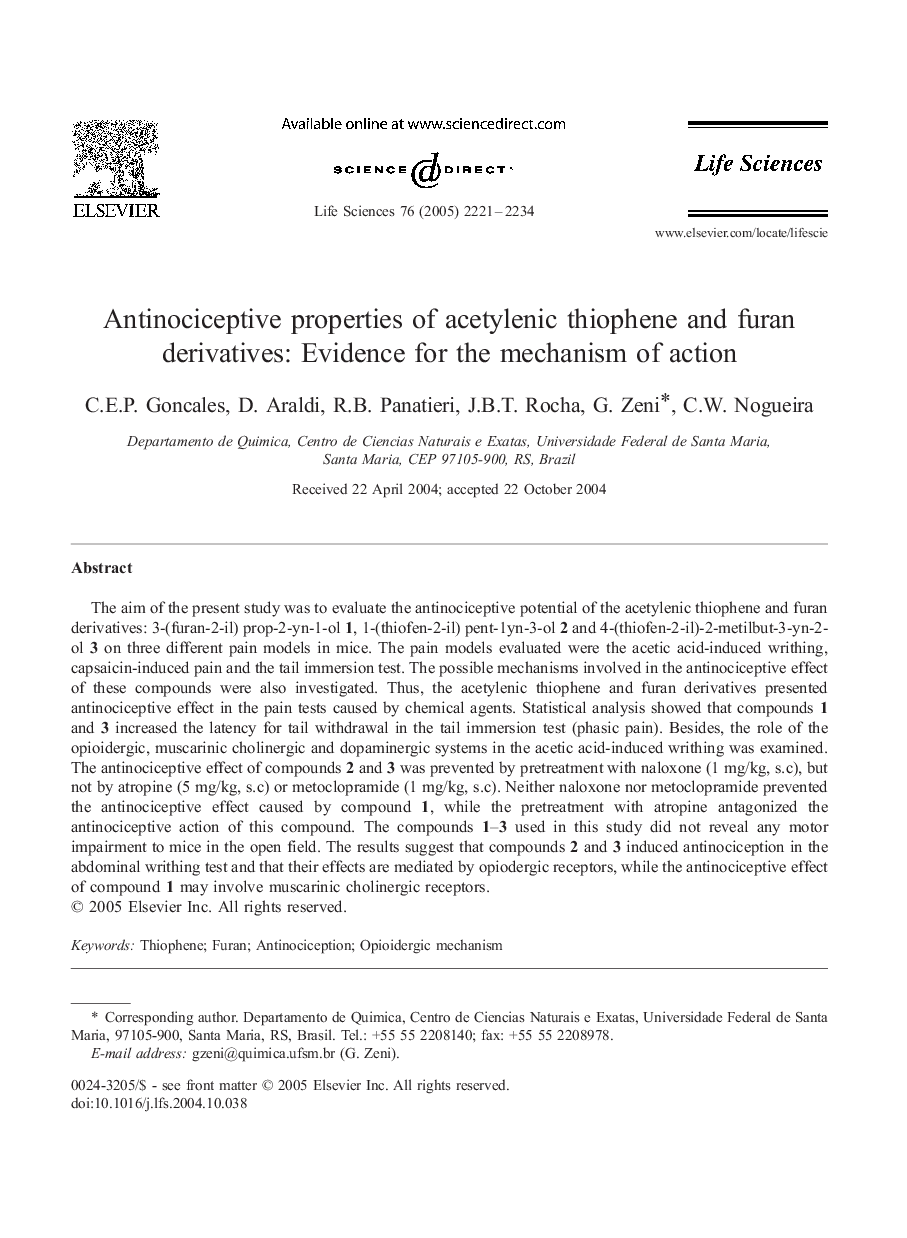| Article ID | Journal | Published Year | Pages | File Type |
|---|---|---|---|---|
| 2555039 | Life Sciences | 2005 | 14 Pages |
The aim of the present study was to evaluate the antinociceptive potential of the acetylenic thiophene and furan derivatives: 3-(furan-2-il) prop-2-yn-1-ol 1, 1-(thiofen-2-il) pent-1yn-3-ol 2 and 4-(thiofen-2-il)-2-metilbut-3-yn-2-ol 3 on three different pain models in mice. The pain models evaluated were the acetic acid-induced writhing, capsaicin-induced pain and the tail immersion test. The possible mechanisms involved in the antinociceptive effect of these compounds were also investigated. Thus, the acetylenic thiophene and furan derivatives presented antinociceptive effect in the pain tests caused by chemical agents. Statistical analysis showed that compounds 1 and 3 increased the latency for tail withdrawal in the tail immersion test (phasic pain). Besides, the role of the opioidergic, muscarinic cholinergic and dopaminergic systems in the acetic acid-induced writhing was examined. The antinociceptive effect of compounds 2 and 3 was prevented by pretreatment with naloxone (1 mg/kg, s.c), but not by atropine (5 mg/kg, s.c) or metoclopramide (1 mg/kg, s.c). Neither naloxone nor metoclopramide prevented the antinociceptive effect caused by compound 1, while the pretreatment with atropine antagonized the antinociceptive action of this compound. The compounds 1–3 used in this study did not reveal any motor impairment to mice in the open field. The results suggest that compounds 2 and 3 induced antinociception in the abdominal writhing test and that their effects are mediated by opiodergic receptors, while the antinociceptive effect of compound 1 may involve muscarinic cholinergic receptors.
